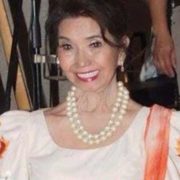IN private homes, we learn yet of another world — of quiet angels with gentle hearts, who, back home, used to be teachers, bank tellers, office workers, civil engineers, registered nurses, and or certified nurse aids; who handle with special acrobatic grace and cold arrogance, the fine dignity of their “clients” last moments.
They try to help their clients not to be tormented with meaningless chemical assaults in their last days when they could no longer be at a hospice. Not medical invasion of that life’s integrity, not one indignity imposed through carelessness or indifference — just the precise moment to let go, for that last plunge; to let them fall easy and gentle. That is the human art, the caregiver at its best.
A caregiver, in general terms, is one who is responsible for the care of someone who has poor mental health, physically disabled or whose health is impaired by chronic sickness or old age. He or she could be an unpaid or paid relative or friend of the individual that helps in their activities of daily living.
In the so-called Sandwich Generation, there’s this genre of people who care for their aging parents while supporting their children.
But because of the declining standards of living and economy, many caregivers are immigrant workers who toil long unregulated hours, and are underpaid. They left their families that required care themselves, which puts further stress and pressure, throw in the utter non-support from social work and health services, and the fact that they remain hidden or invincible as undocumented aliens.
They play many roles, while caregiving hands on — health provider, care manager, friends, companion, surrogate decision makers and advocates.
They manage medication and personal hygiene, take them to their doctors, takes care of household chores, meals or bills; for those who cannot do these things.
The running flaps and presumed conclusions over board and care and related health-oriented facilities makes the choice of putting one’s trust in someone to care for a loved one, that has reached across roads one of life’s most difficult decisions.
While most who work in the field are caring and well trained, still there is no denying the essential truth of such places.
You can choose your board and/or care facility, convalescent hospital by collecting referrals, talking with social workers and learning the ins and outs about caregivers and consumers.
Let me tell you about a factual nugget. About 90 percent of board and care facilities are owned by Filipinos. There was a time when small-scale care homes (like 6 beds), it barely breaks even. The negatives are disheartening: but indomitable, like a magnificent obsession. These owners’ resiliency in the field of health services has won respect and admiration even from their American counterparts. They no longer wonder why those who started as caregivers, given a couple of years end up administrators, managers, owners or all of those rolled into one!
But who takes care of the caregivers?
***
E-mail Mylah at [email protected].







